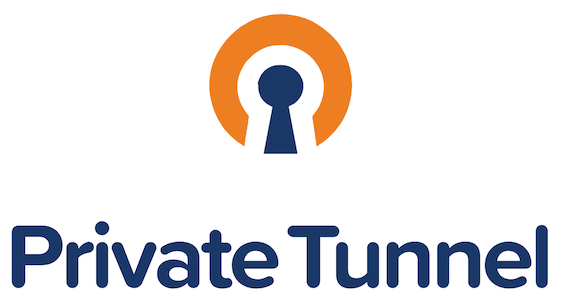Mastering Compliance: A Blueprint for Corporate Growth

In today’s highly regulated business environment, compliance has evolved into more than just adhering to rules and regulations—it is a strategic asset that drives corporate growth. Organizations that prioritize compliance are not only mitigating risks but also unlocking opportunities for innovation, trust-building, and long-term success. Mastering compliance is no longer optional; it’s essential for businesses seeking to thrive in a competitive market.
This blog outlines a comprehensive blueprint for integrating compliance into your organization’s DNA, showcasing how it fosters growth, resilience, and ethical leadership.
Why Compliance Is Crucial for Growth
Compliance forms the backbone of a resilient organization. It safeguards against legal penalties, reputational damage, and operational disruptions while fostering a culture of trust and accountability. Beyond risk management, a robust compliance program enables companies to identify new markets, streamline operations, and enhance stakeholder confidence.
Incorporating compliance into your business strategy ensures that every decision aligns with both regulatory requirements and corporate values.
The Core Pillars of a Compliance Blueprint
To build a strong compliance framework, organizations must focus on the following key pillars:
1. Leadership Commitment
Compliance starts at the top. Leadership must champion compliance initiatives and lead by example. When executives prioritize compliance, it sends a clear message to employees that ethical behavior and regulatory adherence are non-negotiable.
Leadership commitment also involves allocating resources to compliance programs, appointing skilled compliance officers, and integrating compliance into the overall business strategy.
2. Comprehensive Policies and Procedures
A clear, well-documented set of policies and procedures is the foundation of any compliance program. These documents should outline:
- Regulatory requirements relevant to the organization
- Internal standards of conduct
- Procedures for reporting and addressing violations
Regularly updating these policies ensures they remain relevant in the face of evolving regulations and business needs.
3. Employee Training and Engagement
Employees are the first line of defense against compliance risks. Providing regular training programs that cover regulatory requirements, company policies, and ethical decision-making empowers employees to act with integrity.
Engaging training methods, such as interactive workshops and scenario-based simulations, enhance retention and application of compliance principles. For more tips on designing effective training programs, click this link here now for valuable resources.
4. Risk Assessment and Monitoring
Proactively identifying and mitigating risks is a critical aspect of compliance. Conduct regular risk assessments to evaluate potential vulnerabilities and implement controls to address them.
Monitoring mechanisms, such as internal audits and real-time reporting tools, ensure that compliance efforts remain effective. This continuous improvement process reduces the likelihood of violations and enhances operational efficiency.
5. Technology Integration
Leveraging technology streamlines compliance processes and improves accuracy. Compliance management software can automate tasks such as tracking regulatory changes, conducting risk assessments, and maintaining audit trails.
Integrating technology also enhances transparency and ensures consistent adherence to policies across the organization.
The Role of Compliance in Corporate Growth
1. Enhancing Reputation
A strong compliance program builds trust among stakeholders, including customers, investors, and partners. Companies known for ethical practices and regulatory adherence are more likely to attract and retain loyal stakeholders.
2. Driving Operational Efficiency
Compliance initiatives often uncover inefficiencies in existing processes. Addressing these gaps not only ensures adherence to regulations but also streamlines operations, reduces costs, and boosts productivity.
3. Fostering Innovation
Compliance fosters a culture of accountability and transparency, which encourages employees to think creatively while adhering to ethical guidelines. This balance between innovation and regulation drives sustainable business growth.
4. Expanding Market Opportunities
Meeting compliance requirements opens doors to new markets, especially in heavily regulated industries. Companies that demonstrate a commitment to compliance are better positioned to secure licenses, approvals, and partnerships in global markets.
Overcoming Compliance Challenges
While mastering compliance offers significant benefits, organizations often face challenges such as:
- Resource Constraints: Limited budgets can hinder the development of robust compliance programs.
- Regulatory Complexity: Navigating overlapping regulations across jurisdictions can be overwhelming.
- Employee Resistance: Ensuring buy-in from all employees requires ongoing education and communication.
To address these challenges, organizations should prioritize compliance as a strategic investment, leverage technology for efficiency, and foster an inclusive culture where employees feel empowered to uphold ethical standards.
Measuring the Impact of Compliance
To evaluate the effectiveness of your compliance program, consider the following metrics:
- Reduction in Violations: Track incidents of non-compliance and measure improvement over time.
- Employee Engagement Scores: High engagement indicates that employees understand and value compliance initiatives.
- Audit Outcomes: Successful audits with minimal findings reflect a strong compliance framework.
- Stakeholder Feedback: Positive feedback from customers and partners demonstrates trust in your organization’s ethical practices.
By analyzing these metrics, companies can identify areas for improvement and ensure their compliance program continues to drive growth.
The Compliance Officer’s Role
At the heart of any successful compliance program is the Compliance Officer. These professionals act as both enforcers and educators, guiding the organization in adhering to regulations while fostering a culture of integrity.
Compliance officers collaborate with leadership, design training programs, and monitor adherence to policies. Their efforts ensure that compliance becomes a strategic advantage rather than a regulatory burden.
Conclusion
Mastering compliance is a journey that requires dedication, innovation, and strategic vision. By integrating compliance into every aspect of your operations, you can not only mitigate risks but also unlock opportunities for growth, build stakeholder trust, and position your organization as an industry leader.
For companies seeking to thrive in today’s complex business landscape, a robust compliance blueprint is the key to sustainable success.
What's Your Reaction?
























